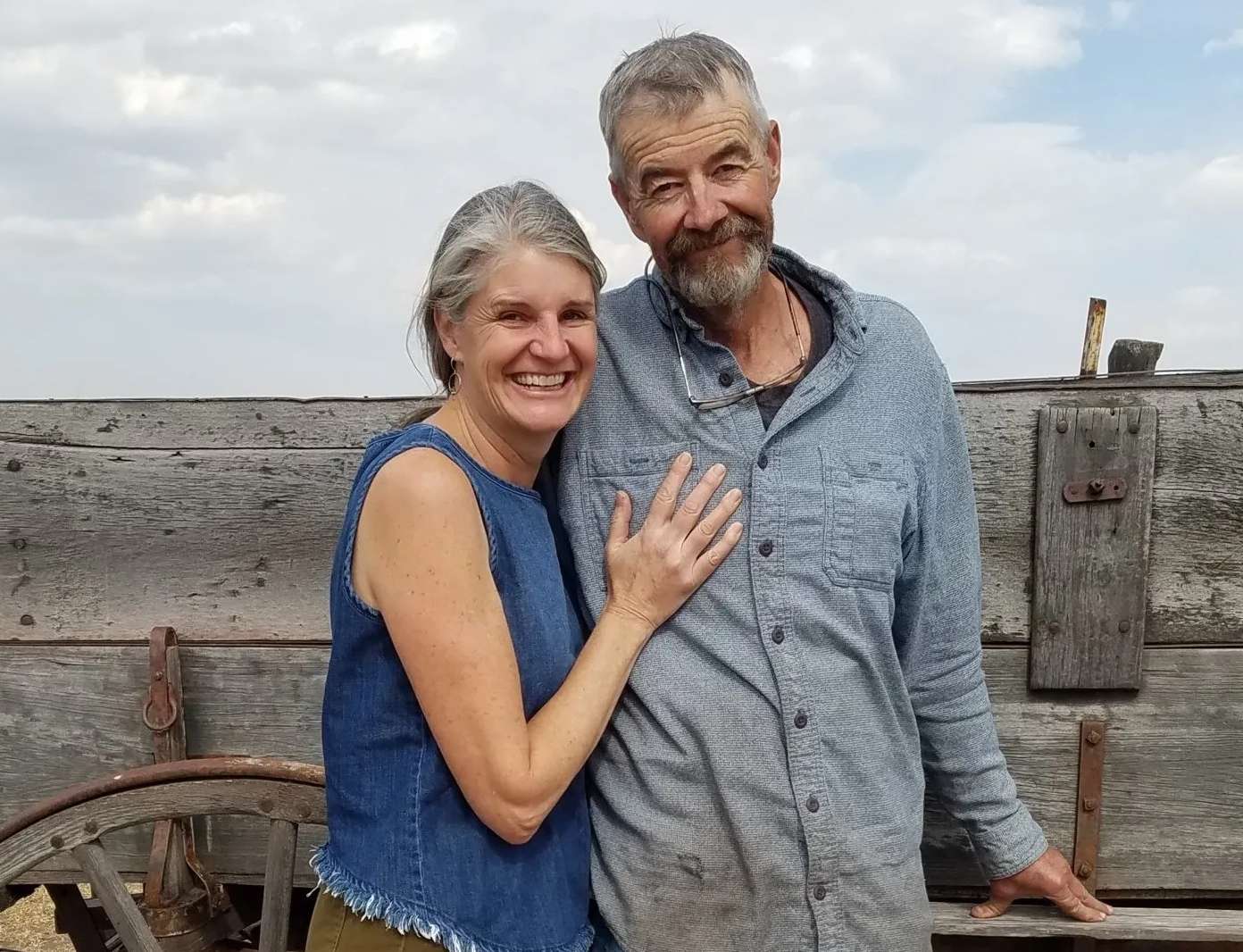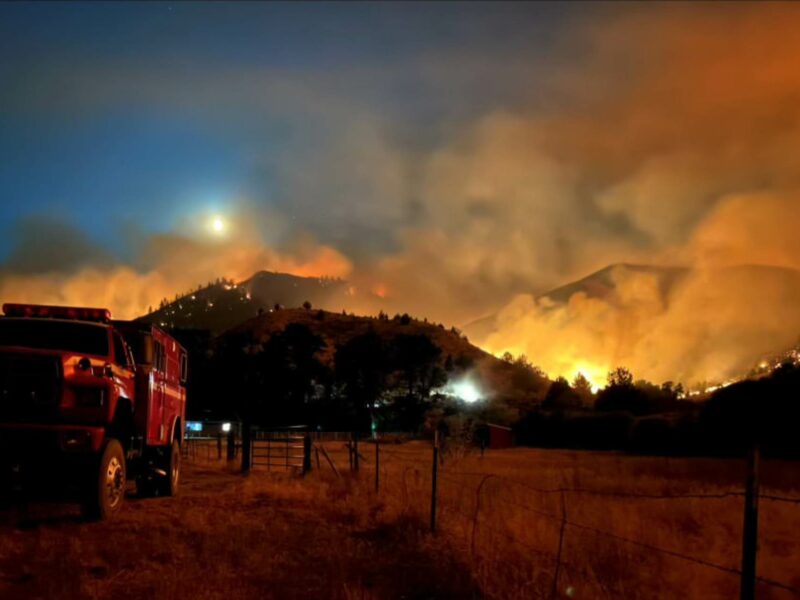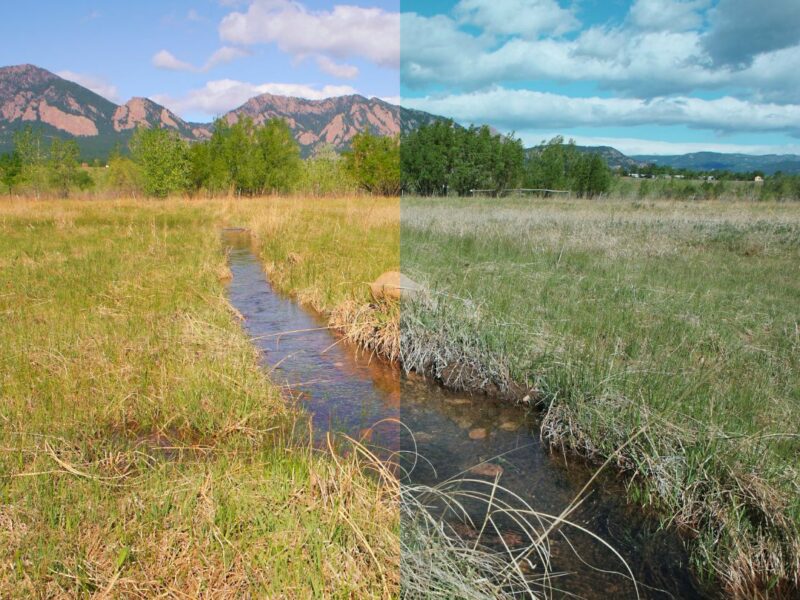By Ellen Waterston
A Conversation with Becky Hatfield Hyde & Taylor Hyde, owners of Hatfield Hyde Land Trust, Brothers, Oregon
When it comes to this busy, hopscotching duo, finding Becky Hatfield Hyde and Taylor Hyde at the same place at the same time is a rare occasion. This was one of those. I pull in between the weathered barn and the peaked roof house at their ranch outside of Brothers. An old wooden windmill stands cyclopic watch over the hard dirt circle where I park next to pick-ups and dirt bikes. Following Becky and Taylor across the wooden porch to their front door, I detect the slight but unmistakable scent of a skunk. I thought I’d be helpful and mention it. As though they hadn’t noticed! Becky laughed, “We have an understanding. If he doesn’t spray us and keeps the pack rat population under control, he can live under the porch. So far, so good.” Pack rats are a fixture of the high desert. Pink ears and little black nose notwithstanding, they stop being cute when they build their smelly nests in crawlspaces or chew electrical wires under the hood of a tractor or pick-up. The skunk solution, like Becky and Taylor’s solutions to just about everything, was a natural, collaborative, creative and sustainable one…and always with a healthy dose of humor.
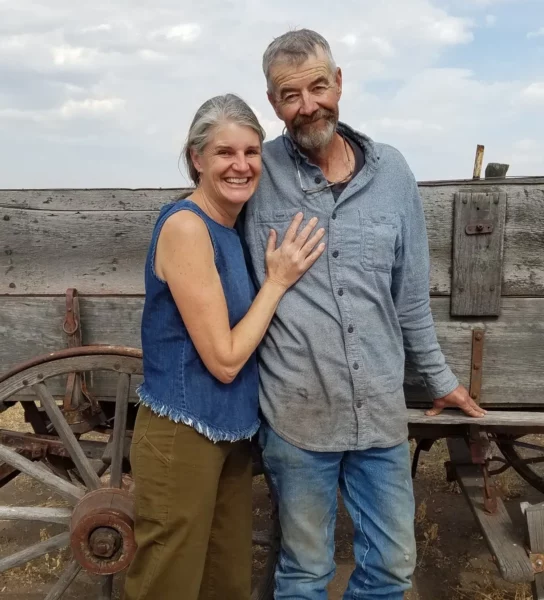
“We learn by watching the flora and fauna of the desert adapt. It is amazing what the desert can do with what it gets.”
Taylor Hyde
This post was originally published by the Oregon Desert Land Trust. It is part of their Sharing Common Ground series, all authored and photographed by the talented Ellen Waterston. On Land is partnering to publish these beautiful profiles to a wider audience.
Inside their house, every nook and cranny speak of life lived fully. The boot room is a jumble of overcoats, hats, footwear, binoculars, tools, grocery totes and their exuberant yellow labrador’s dog bed. Notice of that night’s parent/teacher meeting at the Brothers School is taped to the fridge door. The youngest of their five children is a student there. Lunch sandwiches sit stacked on a plate on the kitchen counter. Helping himself to one, their son, Jack, on a weekend break from work in Portland, pulls up a stool from the kitchen. To make room on the sofa, Becky makes a pile of the updates on policy changes she and Taylor need to keep track of: fire management, sage grouse and wolf protection, state and federal water allocations, Bureau of Land Management and Forest Service permits. She sets to one side the binder of documents she’ll need at her Oregon Department of Fish and Wildlife Commission meeting that night in Burns. You heard right. After our meeting and then the Brothers school meeting that she and Taylor will attend together, she’ll head to Burns, an 80-mile drive each way.
Nursing a bruised leg after a run-in with a piece of equipment, Taylor makes a limping entrance, easing carefully into his La-Z-Boy recliner. “Before my injury,” he says wryly, “I’d say I ranch because of the beautiful skies, the vistas. I’d get romantic about it. Now, after my injury, I’d say I have a job. A hot (when it’s not freezing), steep, miserable, and rocky one, but profitable.” An inside joke. Ranchers often quip it’s the psychic income as much as anything that keeps them in business. The long views, the even sets of calves, unfathomable night skies, showstopping sunsets, the sounds of silence, the shy return of natural grasses, the not-too-much folks. No, you can’t take these to the bank. Why? Because they’re invaluable. All the more reason to protect and preserve. Taylor adds to the list: “The cicada hatch. Every seventeen years. It was this year! We think we know so much. We know nothing.”
When asked how they define community, Becky claims all of the high desert, her arms outstretched to illustrate the big territory she describes. She and Taylor can legitimately make that claim. They own and operate ranches that take in portions of Crook, Deschutes, Lake and Klamath counties near the communities of Brothers, Chiloquin and Beatty — three sustainably operated far flung cattle ranches in four high desert counties, miles and miles and many hours apart. Sure, there’s help from any one of their five children when they’re not off at school, college or pursuing their careers. And there’s some seasonal help. But, typical of family-owned ranches, this diverse operation is missioned, visioned and managed by two people. What does it take?
Taylor sums it up in his plainspoken, poetic manner. “A lot of what I do every day is prepare for rain.” Looking out at the expanse of sagebrush steppe that characterizes the terrain on their Hatfield Ranch he adds, “And it always comes.”
The chance to discover is as important to preserve as open space.
Taylor Hyde
Becky and Taylor’s primary residence used to be in Paisley, Oregon, more or less equidistant from their ranch properties and offering an entire school district in one building, which, for a good stretch, satisfied their family’s educational needs. But for now, the Brothers school is a better match for their bright and motivated youngest. So, their base of operations shifted to what was Becky’s family’s headquarters when she was a child and where, thirty-six years ago, Country Natural Beef was conceived by her father and mother, Doc and Connie Hatfield. It is now a non-GMO verified, animal welfare certified, cooperative of 100 family ranchers in nine Western states producing sustainably raised beef cattle. This was also where Doc adapted the Allan Savory holistic range management system to his high desert holdings, reversing desertification of grasslands by shortening the stay of herds on any particular pasture. It’s a practice that allows native grasses to regenerate and spread, simultaneously benefiting the land and, thanks to the protein-rich native grasses, the cattle.
This rustic ranch house of Hatfield history, set in an oasis of fruit trees and gardens, seems pleased to have regained its status as the family’s headquarters after a stretch as seasonal housing, glad of the comings and goings. At least for this school year. At least for as long as this is the best decision for most, another trademark of how this couple approaches all they do—for one another, for community, for working lands, for livestock.
“Preparing for rain.” Jack repeats his father’s earlier statement. He’s been thinking about it. “If you’re going to farm or ranch in the high desert, you have to be an optimist. Pessimism is a privilege of the urban.” Having grown up ranching, Jack, a college graduate, is testing his urban/rural theory in real time, now living in Portland where he is putting his political training to good use. His mother provides the reality check. “Sure, we prepare for rain. We also prepare for not rain. But that’s not the point. How we steward the land with less is the point. We only got seven inches last year. That’s all. And it came late. Yes, the reservoirs on this ranch are low but we grew an abundant garden and the wildflowers were amazing. We learn by watching the flora and fauna of the desert adapt. It is amazing what the desert can do with what it gets.”
It isn’t about what you can take away from the desert but what you can bring to it.
Becky Hatfield Hyde
Picking up where Becky leaves off, Taylor speaks more pragmatically about how preparing for rain is actually a nonstop, 24/7 proposition. It includes working natural fertilizer into the ground with the help of harrows and the hooves of the cattle as they are rotated through pastures—the ground essentially harvested, tilled and replenished by the livestock. It demands doing everything possible to facilitate native plant regeneration, relying exclusively on the seeds from native plants. No artificial introduction of seeds occurs on the Hyde’s ranches. Range stewardship and animal husbandry are the order of every single day. Taylor speaks a language of plant diversity, transects, water infiltration, soil carbon, forbs, bunch and native grasses, sage, bitterbrush, seed banks, plant litter. And when it comes to their beef cattle, to call it a cow/calf operation “oversimplifies what we do,” Taylor states. He explains that, unlike most cow/calf operations that sell their calves after weaning and before becoming yearlings, they and all the Country Natural Beef ranchers maintain ownership of their beef all the way to the store to guarantee the integrity of their grass-fed product. It’s easy to see where Becky got her land and livestock genes, her commitment to the betterment of the desert, but what about Taylor?
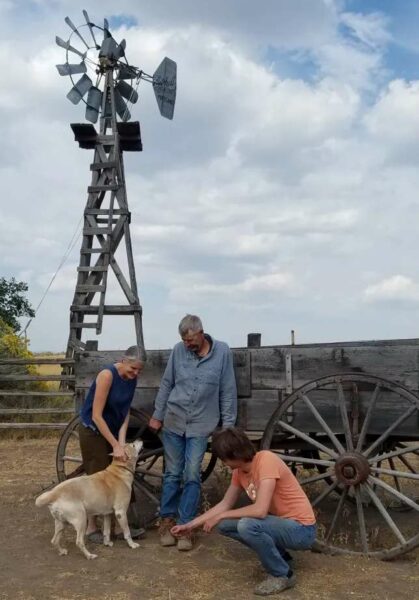
He grew up on the historic Yamsi Ranch in Chiloquin, Oregon, located on the Klamath Marsh and Williamson River, the ranch in his family since 1911. It remains part of the three-way ranch rotation for Taylor and Becky. Its own wildlife preserve, the ranching management practices at the Yamsi are as holistic and progressive as they come and set the tone for the rancher and conservationist Taylor is. Before her death in 2017, Taylor’s mother Gerda (a veritable force of nature), advocated for environmental protection and habitat conservation to raise chemical-free beef. The extended family now running the ranch has followed her lead. This underscores the extent to which Yamsi, along with many other sagebrush steppe working ranches, are both guardians and vanguards of rangeland conservation, working to show how critical working landscapes are to the long term health and vibrancy of the desert. These ranches are uniquely positioned to safeguard ecosystems, open space, and traditional ranching culture.
It’s not only conservation practices that are programmed into Taylor’s DNA but also his love of language and, well, birds (just ask him about the green-tailed towhee). His father, Dayton, was the author of fifteen books that advocated an environmentally responsible philosophy of land management. One is Sandy, republished in 2000—an hilarious account of how Dayton Hyde rescued and raised, alongside his children, an orphaned sandhill crane. In her introduction of the republication, author Gretel Ehrlich says Hyde’s book is “…above all, a reminder of how this man’s heroic act to save an unhatched egg multiplied into a lifetime of conservation activities.”
Becky speaks prophetically regarding the location of the Brothers ranch. “We’re on the urban growth boundary. Bend is only 42 miles away and we’re feeling it more and more, the growing appetite for the desert. How can we educate more people about it, how precious it is, its people are? It isn’t about what you can take away from the desert but what you can bring to it. I am telling Brent Fenty and the Oregon Desert Land Trust ‘thank you, thank you, thank you…’ when was last time we have ever felt any little life ring thrown in our direction, an expression of understanding of those living out here in the desert?”
In reflecting on the pressures on the desert and its varied inhabitants, Taylor offers something of a koan. “The chance to discover is as important to preserve as open space.” But, we counter, open space is the best place to make discoveries, so wouldn’t the preservation of open space be first in line?
Breaking the reflective silence, Becky suddenly stands up, her watch reminding her of all she still has to accomplish within the confines of this one day. “I am starting to get tasky,” she confesses. After good-byes, Taylor sees me off with the reminder, “We are preparing for rain.” It turns out it’s all of our task.
The Oregon Desert Land Trust works to conserve private lands in the state’s high desert region. These wild and working lands are critical to ecological, economic and community health. They are based in Bend.
Ellen Waterston is an award-winning writer of both non-fiction and poetry. Her most recent non-fiction book is Walking the High Desert, Encounters with Rural America along the Oregon Desert Trail.


